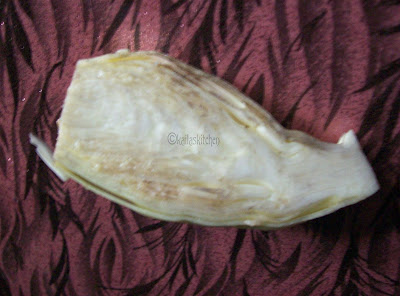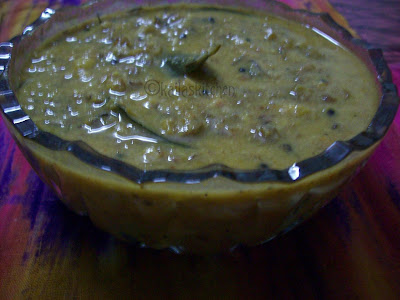 Protect Yourself and Your Home from Contractor Rip-offs, Scams and Shoddy Work!
Protect Yourself and Your Home from Contractor Rip-offs, Scams and Shoddy Work!
As winter comes to a welcome end and we enter the spring season, homeowners inevitably will be besieged by offers, promotions and come-ons from all kinds of home improvement contractors and installers –
plumbing,
air conditioning, doors, windows, remodelers, landscapers -- you name it. Most will be legit...but some won't be.
Unfortunately, fraudulent contractors are extremely common in the home improvement industry…and they really seem to come out of the woodwork around this time of year. Because this area is so specialized and intimidating to many homeowners, it is easy to get taken advantage of by a disreputable “professional.”
Whether you are looking for a home improvement contractor to perform routine repairs, install equipment or perform major reconstruction and remodeling, here are a few simple tips to ensure that your home improvement contractor or installer is on the up and up.
Get It In WritingMake sure to thoroughly read and understand the written contract for your home improvement project before you sign. Discuss your questions and get clarification. If you are not given an estimate and a contract in writing, or if your contractor is unwilling to explain things to you clearly, hire someone else. If you don’t understand a contract, don’t sign it; you could obligate yourself to repairs that you are not prepared to pay for. And don’t give any oral commitments to any work; as Yogi Berra once said, “An oral contract ain’t worth the paper it’s written on!”
Cheaper is Not Always BetterWhen it comes to home improvements, you almost always get what you pay for. Be wary of contractors that promise things that sound too good to be true. If your instincts tell you something strange is is up, you are probably right. Cheap contractors usually use cheap materials, sell cheap equipment and employ cheap, inexperienced, low-quality labor. And that can cost you a lot more in the long run -- both in operation costs and in future repairs.
Fraudulent contractors often try to scare homeowners with news of urgent or emergency repairs…or fantastic deals that you must act upon immediately. Do not let anyone pressure you into costly repairs on the spot; seek a second or third opinion to be sure. Always shop around and get multiple estimates. Focus on getting the best value; not the best price.
Check CredentialsIs your contractor properly licensed? Can he get all the permits to legally perform your home improvement or repair? Does he have a favorable rating from the Better Business Bureau? Does he belong to professional and industry trade organizations? Does he follow the industry’s best practices? Reputable contractors can answer yes to all these questions.
Get a Referral
Word of mouth is crucial in hiring a good contractor, but you have to be sure your referral is coming from a reputable source. Never base your decision on the word of a solicitor or stranger. Instead, ask friends, family members and neighbors, or consult a referral service that provides the names and contact information for qualified, pre-screened professionals in your area. Do not just go for the cheapest price estimate—take the time to get a solid referral; you could save thousands, especially if that amazing deal offered by the door-to-door salesman turns out to be a fraud. The best home improvement contractors have been in the business for some years and have a track record of customer satisfaction.
Read Home Improvement Contractor ReviewsThere are plenty of websites that offer unbiased customer reviews of local businesses and contractors – among them Yelp, Insider Pages, Angie’s List, Local.com – as well as business directory sites (Yellowpages.com etc.) and search engines like Google, Yahoo and Bing. Take the time to go to these sites and check out reviews.
Click Here to View a List of Customer Review Sites!Beware of “Travelers”
“Travelers” are door-to-door solicitors that come knocking in hopes of gaining your trust and your business; this is one of the most common contractor frauds. These scam artists will talk fast, promising steep discounts on everything from roofing to bathroom remodeling. They will often cite their exclusive access to overstock building supplies as the reason for their great deals. The best way to protect yourself is to politely decline the sales pitch from the start, but you can also check the yellow pages for the name and number of the contractor at your door. If you cannot find a listing, tell him to hit the bricks.
Never Pay Up FrontNo reputable contractor or installer will ever ask for payment until after the work is completed to your satisfaction, and will never require cash payment. If your contractor asks for payment up front or insists on doing a cash-only business, find a new contractor.
Do Not Get Your Own Building PermitsAnother common tactic employed by fraudulent contractors is to request that you secure any necessary building permits yourself. A good contractor will do this for you — that is why you are paying him to do the work.
If You Are a Victim of a Fraudulent Contractor...
If you think you have been a victim of a fraudulent contractor, take immediate action to fix the situation. Consult a lawyer to find out if you have any legal recourse and report the incident to your local Chamber of Commerce and the Better Business Bureau. You may also need to involve local law enforcement if you believe a crime such as larceny or identity theft has been committed.
Check Out Our Contractor Checklist!Horizon Services offers a
21-Point Contractor Checklist covering all the primary questions you need to ask BEFORE you select any home improvement contractor. It’s MUST-READING for all homeowners thinking of making any home improvement.
Click Here!Related Contractor Information from Horizon Services…















